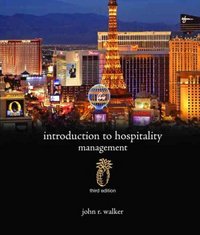Conduct a force field analysis for something that needs to be changed (work, personal, other). Refer to page 499-500, see figure 14.1 and the toolkit.(1) what is the problem and what change is desired, what is preventing change and why hasn't it happened yet? [why is the status quo remained constant](2) identify drivers and barriers and denote their strength by length of vectors (example to follow, you make your own based on your change):Example: A rural school district trying to improve third grade student achievement test scores in math.Drivers Barriers Compelling Vision -------------->
CHAPTER ta Making Change General Models of the Change Process The reality is that man].F change efforts taileven when it seems profoundly logi cal or imperative that change should succeed. This Frequently occurs because change initiatives are often haphazard and not managed in line with best prac tices. Investment managers would not think of investing funds without con sidering models of risk. portfolio performance. and so on. Doctors would not prescribe medicine wilhout evidence of the effects of the prescribed drugs. 1tr'et change efforts ate often curiously free of any adherence to the change process models shown to predicl and explain when and how change occurs. Consistent with the evidencebased approach we take in this book. however. we aim to make sure that _vou do not repeal these errors. In the following sections. we brieflyr explain several models of change that can help you think about how change happens. We then present a more specic framework for planned action and a set of practical strategies for converting an organizational problem into an achievable change initiative. The intention hen.- is to help you both know (that is. know how change occuis} and do (bring about and successfully manage change]. Lewin's Unfreeze-Change-Refreeze Model The renowned sociologist Kurt Lewin developed one of the most enduring con- ceptions of organizational changed which was a direct extension of his eld the oo'. In general. he conceived of elds of force that struggle to maintain the status clue as depicted in Figure 14.1. Lewin's model described change as a three-stage process of unfreezing, changing, and reh'eezing. In Lewin's unfreeze-change-refreeze model, the rst stage, tiitfieezmg, involves overcoming inertia and breaking down existing ways of thinking. Resistance has to be overcome. and a readiness or willingness to get involved with a change has to be sparked. Lewin felt this stage is often neglected because eager and excited change agentspeople responsible for making or communicating :1 changeoften dive right in and try to sell their change without rst. diagnosing and dealing with the resisting factors. The second stage is what Lewin called changing and refers to when the change intervention is started and ongoing. Changing is often a period ofanxietv and tension as old ways are challenged and the reality of a new way.r is first trulv experienced. New information and rewards are introduced and comfort zones are pushed. The third and final stage is what Lewin called refreezing. Ideally, a new mindset and behavioral pattern is created for those involved. and the change yields positive benets for the unit or organization. Driving Forces Resisting Fe rces > G d .\"a' a 499 KO 14-1 DO 14-] "* It ." {rt-no W practical as s Kuri Lenin FIGURE 14.1 Lewin's Force Field Analysis







